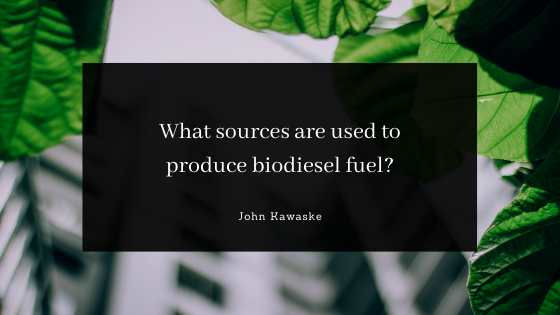Despite being a niche industry, biodiesel can be somewhat nebulous in concept. What separates biodiesel from plain, old diesel? The difference lies in the chemical structure of these two fuel resources. While ordinary diesel relies on saturated hydrocarbons, biodiesel contains unsaturated chemicals known as fatty acid methyl esters, or FAME. Additionally, while diesel comes from mines around the world, biodiesel can be manufactured with specific but common ingredients. These are just a few resources used to produce biodiesel fuel.
Recycled Cooking Oil
The biodiesel industry is always looking for ways to reduce, reuse, and recycle. This commitment to clean energy paved the way for the use of waste oils such as vegetable oil. In particular, producers can adjust the fatty acids in vegetable oil to meet industry specifications for safety and health. Since vegetable oil is readily available in grocery stores around the world, the average consumer can create oil-based biofuel at home.
Animal Fat
Another useful means of synthesizing biodiesel is through the use of animal fats. Meatpacking companies often toss excess fat, opting for only the leanest meat. The biodiesel industry makes use of this cast-aside material. From poultry to swine to cows, animal fat of any type can be transformed into oil and used to fuel automobiles. While it’s a smart way to make the most of an animal, and although one-third of fat and oil produced in the U.S. comes from animals, there is only a finite supply of this resource, meaning it’s one that we can’t rely on entirely.
Waste Paper
An emerging resource for biodiesel fuel is that of paper waste. Think about how much paper we produce daily—sticky notes, quarterly reports, receipts, and the ever-popular paper grocery bag being just four examples. With almost one billion trees’ worth of paper converted to waste each year in the U.S., it’s prime time for the biodiesel industry to give a new purpose to old paper. University of Maine’s Technology Research Center is one of many locations studying the applications of biomass such as paper and cardboard in generating biodiesel, specifically jet fuel. This is one resource to keep your eye on in the future!
Corn
It’s a versatile vegetable across all sorts of industries, biodiesel included: corn. As a high-starch grain, corn is relatively easy to convert into ethanol. Plus, corn production is on the rise—in 2018, corn production reached 14.6 billion bushels for the U.S. alone. Since corn is used for livestock feed and ingredients such as cereal, starch, and syrup, it’s no wonder the biodiesel industry has gotten in on the action. Besides, corn is easy to grow, with a vast majority of domestically-grown corn relying only on natural rainfall.

